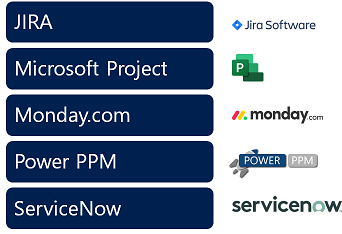
1. Goal Setting
The best projects are clearly defined from the very beginning. There are several types of organizational goal settings such as top down and bottom up approaches . and this is where the balance will have to be maintained between the objectives there are set up by the leadership teams and team members setting up those goals.
Top Down (Organizational)- Organizational Strategy
- Initiatives
- Portfolios of Projects and Programs
- Execution
- Benefits Management
- Focus on Value
Bottom Up (Personal)
- Personal professional development
- Team Objectives
- Project Planning
Examples of goals at the Organizational/Individual levels
 Getting from the “As-Is” to the “To-Be”
Getting from the “As-Is” to the “To-Be”
Goals are about change, and more specifically, they are often about behavior change. Goal setting and action planning are rational ways of charting a path from a recognized, current set of conditions (the As-Is) to a more desirable set of conditions in the future (the To-Be).
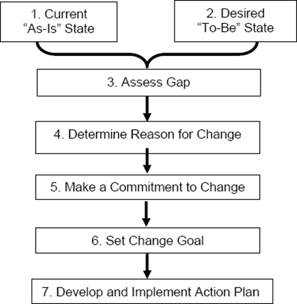
2. Systematizing Process
We talk a lot about repeatability in business, and essentially this starts with breaking down the whole project into the ‘steps’ that will be required.
- Methodical systemization requires a multi-year plan focused on project management discipline in its simplest form, and with methodology enhanced according to a focus on the organizational need: not the facility, the theory, or the grandeur of the solution.
- The plan should aim at the greatest pain first. Be patient with your plan, as it will take three to five years to fully implement a project management methodology.
- The exact sequence for establishing a project management model is not important, but establishing the right sequence for your organization is.
- Project management methodology should not be built for its own sake; it should be gradually designed to solve the problems being experienced.

3. Communication
Communication of important info - both with clients, and within your team internally - is non-negotiable for effective project management.
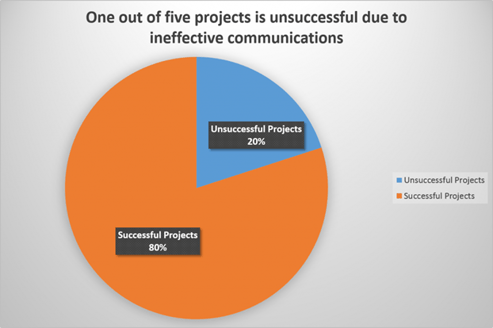
Research by the Project Management Institute (PMI) supports this assertion. The PMI reported that among companies with highly effective communication, 80% of projects met their goals, compared to a 52% success rate for those with minimally effective communication. The more effective communicators enjoyed much higher rates of on-time and on-budget performance, as well (72% vs. 37% and 76% vs. 48%, respectively).
Organizations who take steps to improve project communication can reap the benefits of more successful projects, which is especially important in this complex and competitive global business environment.
Project managers and C-Suite executives often agree that effective communication to stakeholders throughout the project lifecycle is an essential core competency. Here are some tips to communicate more effectively:
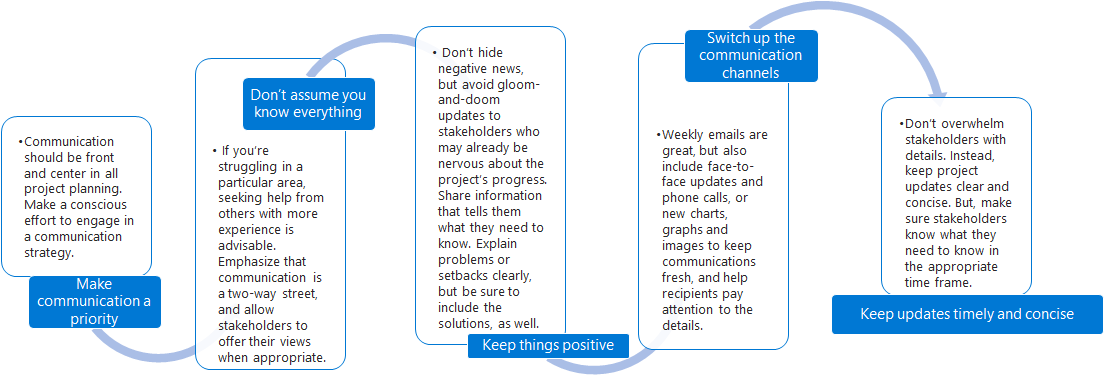
- Make communication a priority
- Communication should be front and center in all project planning. Make a conscious effort to engage in a communication strategy.
- Don’t assume you know everything
- If you’re struggling in a particular area, seeking help from others with more experience is advisable. Emphasize that communication is a two-way street, and allow stakeholders to offer their views when appropriate.
- Keep things positive
- Don’t hide negative news, but avoid gloom-and-doom updates to stakeholders who may already be nervous about the project’s progress. Share information that tells them what they need to know. Explain problems or setbacks clearly, but be sure to include the solutions, as well.
- Switch up the communication channels
- Weekly emails are great, but also include face-to-face updates and phone calls, or new charts, graphs and images to keep communications fresh, and help recipients pay attention to the details.
- Keep updates timely and concise
- Don’t overwhelm stakeholders with details. Instead, keep project updates clear and concise. But, make sure stakeholders know what they need to know in the appropriate time frame.
4. Transparency
If everybody knows what everybody else is doing, it enhances their own understanding of their own role and builds strong connections and understanding throughout your team.
Transparency is defined as “the quality of being done in an open way without secrets.” In the realm of projects and processes, it means creating a system in which all team members can access all relevant information about a project easily and efficiently.
Why is it important?
-
To build trust and teamwork
- Transparency is all about honesty, openness, and trust in the team. It makes the teamwork better as a single, cohesive unit. Project team members are likely to trust each other when they are supported and encouraged to understand what the team is doing as a whole. They can also share valuable information or offer help to others because they feel the team’s success is as important as their individual success.
- Transparency is all about honesty, openness, and trust in the team. It makes the teamwork better as a single, cohesive unit. Project team members are likely to trust each other when they are supported and encouraged to understand what the team is doing as a whole. They can also share valuable information or offer help to others because they feel the team’s success is as important as their individual success.
-
To keep work on track
- Delays and missed milestones can derail any project. A single stuck task creates a cascading effect because of dependencies in project. Transparency is crucial in this case so project managers and team members can identify the bottleneck and work out solutions to correct the situation before it becomes too late for any action. Learn how to set up project milestones for success.
- Delays and missed milestones can derail any project. A single stuck task creates a cascading effect because of dependencies in project. Transparency is crucial in this case so project managers and team members can identify the bottleneck and work out solutions to correct the situation before it becomes too late for any action. Learn how to set up project milestones for success.
-
To improve team productivity
- When team members have ready access to key information, they don’t end up wasting a lot of time waiting for approvals. Instead, they can use that piece of information to get their job done. It also makes it easier for team members to share their tools and techniques with each other, which in turn, can help improve everyone’s productivity.
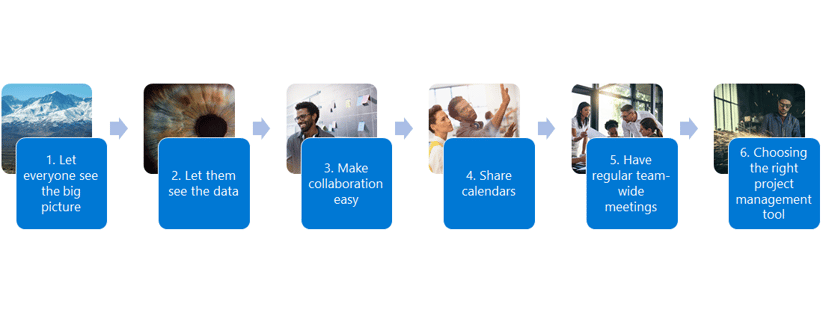
5. Software
Power PPM and Team Planner and how it helps to accomplish the first 4 steps of effective project management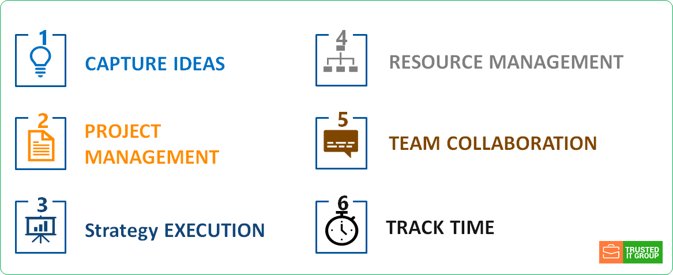
Future of Project Management Software
…a platform offering
|
|
Framework that delivers advanced capabilities
|
Power PPM
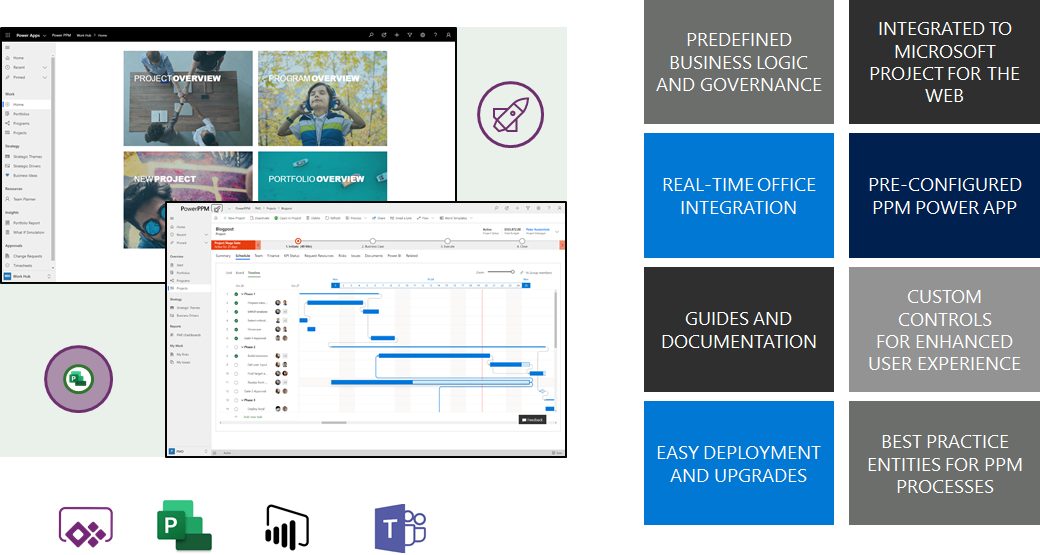
Team Planner
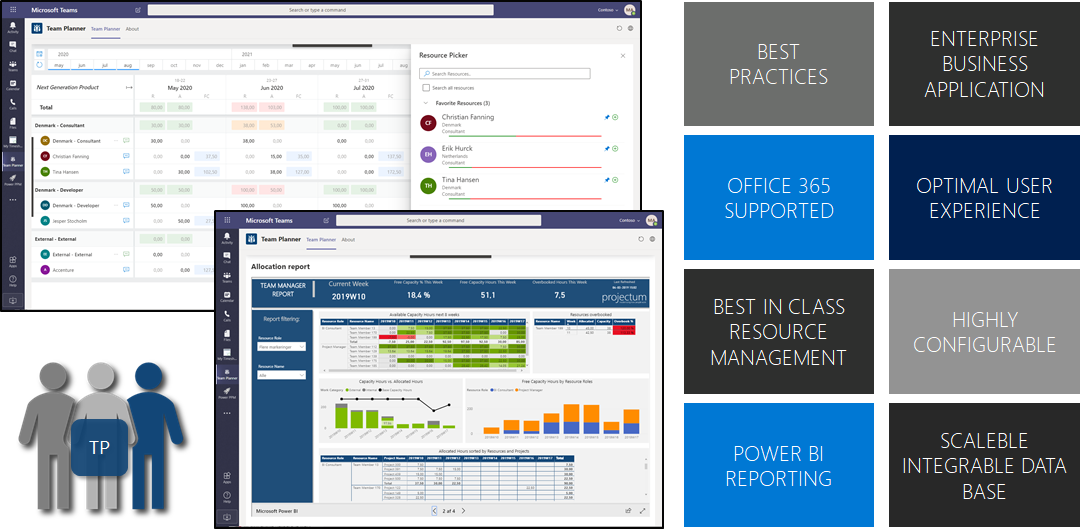
Configuration Steps
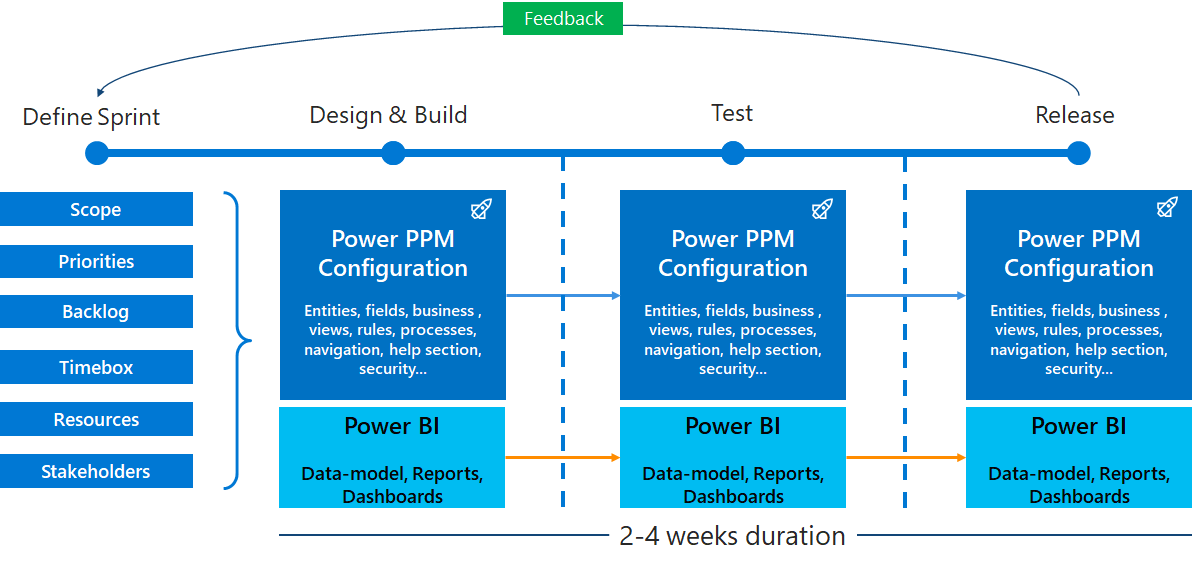
Power PPM Mobility
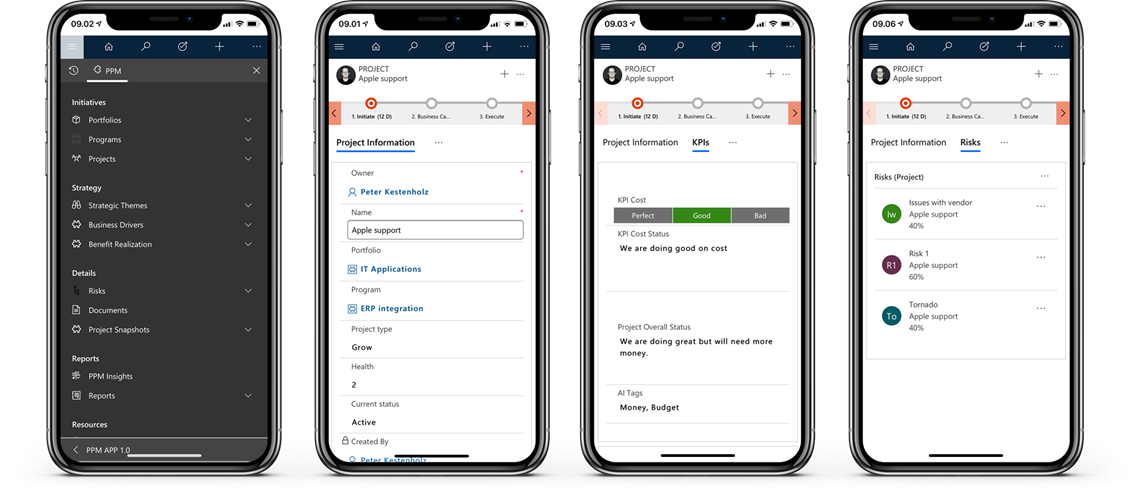
Build for mobility and acceleration of business processes.

Please contact us at info@trusteditgroup.com
Alexander Rodov, PMP, MCTS, CSM


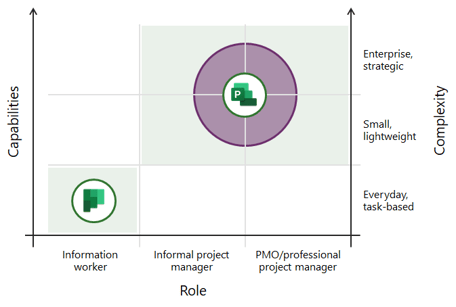
 Power PPM
Power PPM
